Leveraging The Potential of Generative AI
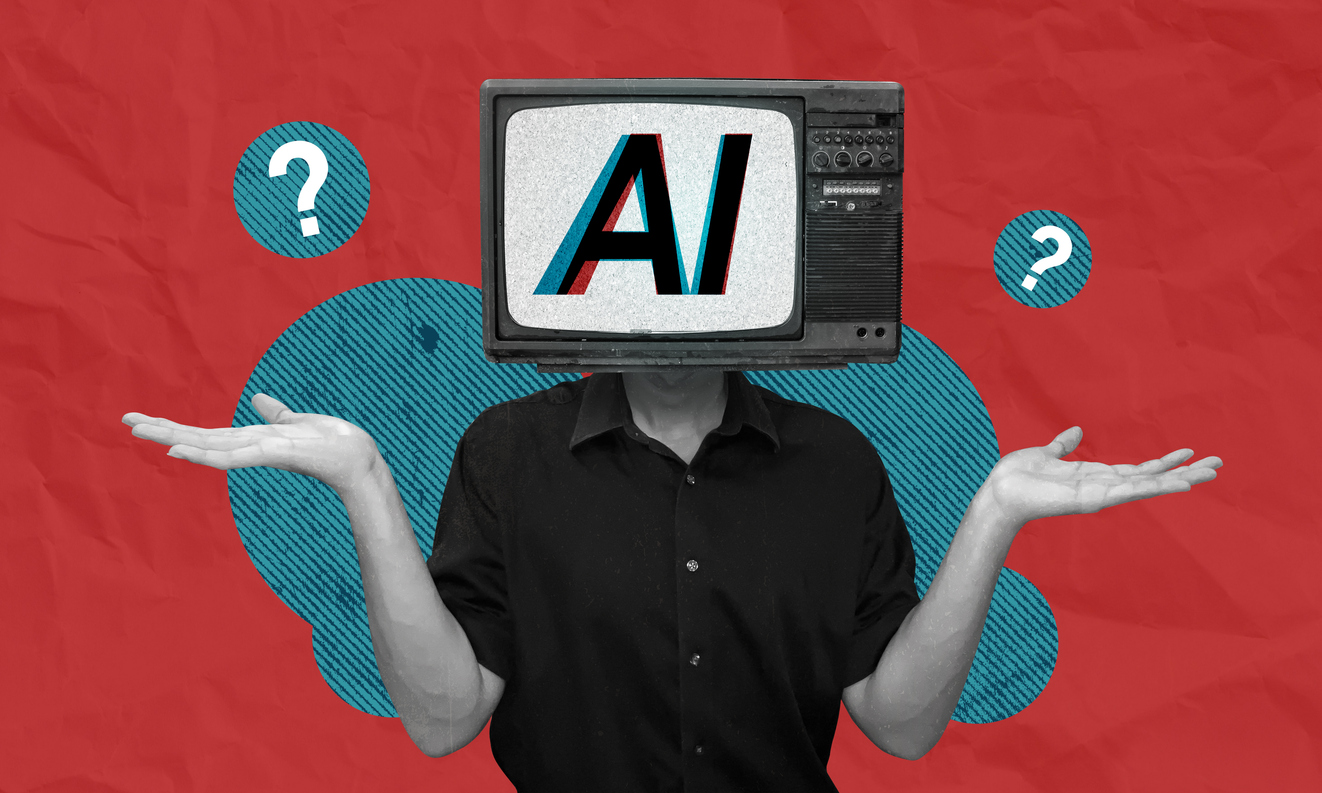
IN THIS SECTION, YOU WILL: Learn how you can responsibly leverage Generative AI as a powerful augmentation tool within to enhance efficiency, data-driven insights, and collaboration, provided you proactively manage its inherent risks and maintain critical human oversight.
KEY POINTS:
- Generative AI (GenAI) offers significant potential to augment your work as an IT architect by enhancing data analysis (Lightweight Analytics), improving knowledge sharing (Collaborative Networks), and streamlining tasks (Operating Model).
- Practical applications include accelerating analytics, generating ADRs and diagrams, augmenting requirements analysis, assisting solution design, improving code reviews, and drafting communications, ultimately freeing you up for higher-value strategic thinking.
- While GenAI promises increased efficiency, consistency, and better data-driven decisions, you must navigate challenges like accuracy issues (hallucinations), security risks, ethical considerations (bias), and the need for continuous human oversight and judgment.
- Responsible adoption requires a principled approach focusing on clear objectives, strong data governance, human-in-the-loop validation, grounding AI with RAG, and fostering an AI-literate culture within your organization.
- The future points towards real-time, augmented EA, agentic AI, and DTOs, further emphasizing the need for adaptability and evolving your role towards governing AI and focusing on strategic, collaborative, and ethical considerations.
This section explores the intersection of Generative AI (GenAI) with IT Architecture, particularly through the perspective of the Grounded Architecture framework.
From what I’ve experienced so far, Generative AI models are powerful tools for creating new content like text, code, images, and designs. They’re transitioning from experimental uses to practical applications in various industries. The potential for GenAI to benefit IT and Enterprise Architecture (EA) is evident, especially as traditional architects often face challenges in managing rapidly changing business needs with tools that can be slow and unconnected. GenAI is an opportunity to make architectural work more effective, automate repetitive tasks, and support faster, data-informed decision-making.
However, I’ve also learned that we might introduce more complexity or new challenges without a clear strategy for using GenAI. The Grounded Architecture approach helped me leverage GenAI while managing its risks. This section is a practical guide for IT and Enterprise Architects looking to integrate GenAI into their practices, based on my experiences combining it with Grounded Architectural ideas. I’ll discuss GenAI’s capabilities, ways to incorporate it, typical applications, potential benefits and challenges, responsible usage practices, and the future. My goal is to empower architects to view GenAI as a strategic asset in their architectural work.
In the appendix, I’ve included some Generative AI prompts I’ve experimented with for various tasks discussed in this section.
(To “eat my own dog food,” this report stemmed from initial research and insights from the Gemini Deep Research chatbot. I refined the content using ChatGPT and polished the language with Grammarly, making extensive manual edits to ensure accuracy.)
What Generative AI Can Do for Today’s Architect
Generative AI, or GenAI, refers to artificial intelligence systems trained on vast amounts of data to create new, realistic content, such as text, code, images, and designs, without simply copying the original data. Unlike traditional AI, which mainly analyzes data and makes predictions, GenAI is specifically designed for creation. Users typically interact with these models using plain language commands (prompts), unlocking various capabilities highly relevant to IT and Enterprise Architects.
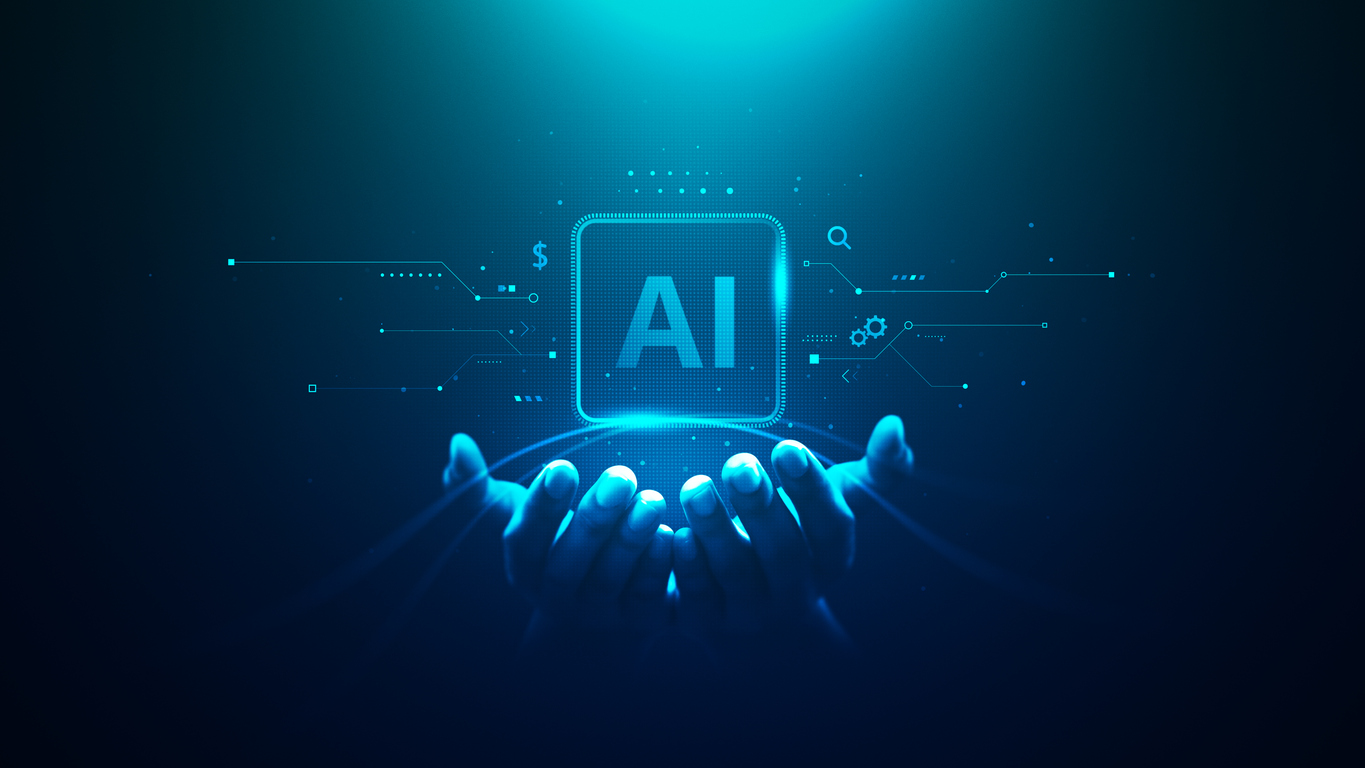
From my first experiences, I could see that GenAI provides architects with powerful tools for creating, analyzing, automating, communicating, and making informed decisions:
- Creating and Improving Content: Quickly draft reports, technical documents, emails, meeting summaries, key decision logs (Architecture Decision Records or ADRs), code snippets, and initial architecture diagrams. Large Language Models (LLMs), a type of GenAI, are central to this.
- Analyzing Data and Spotting Patterns: Examine large volumes of information, both structured (like databases) and unstructured (like text documents), to find common issues in architecture (anti-patterns), security weaknesses, and outdated technology (technical debt). GenAI can also convert architectural diagrams into structured data for easier analysis.
- Automating Tasks for Greater Efficiency: Automate tasks like creating documentation, performing routine code reviews, generating standard reports, extracting requirements from documents, and brainstorming early solution ideas. This automation frees up architects to focus on more complex challenges.
- Improving Interaction and Communication: Power advanced chatbots and conversational assistants that provide instant access to company knowledge, answer questions about architecture, explain complex technical ideas, and share insights across the organization.
- Offering Recommendations and Suggestions: Propose potential solutions, recommend suitable technologies or architectural patterns, suggest optimizations, and outline transition plans. However, the architects always retain the final validation and decision-making power.
Retrieval-Augmented Generation (RAG) is a crucial technology for implementing GenAI in businesses. While standard GenAI models only generate responses based on their initial training data, RAG takes things a step further. It first searches for and retrieves relevant, up-to-date information from trusted sources within the company—such as internal documents, databases, or Enterprise Architecture repositories—before crafting a response. This approach ensures that the AI’s output is grounded in current and reliable company data, making it much more valuable for decision-making.
RAG is vital for making GenAI outputs more trustworthy, accurate, and relevant to the specific business context. It helps reduce AI “hallucinations”, ensures decisions are based on verified knowledge, and strengthens the data-driven foundation of Grounded Architecture.
Integrating GenAI with Grounded Architecture
I see a great potential of Generative AI has to enhance the architecture practice within the Grounded Architecture framework, particularly in areas like data analysis, knowledge sharing, and operational efficiency (see Figure 1).
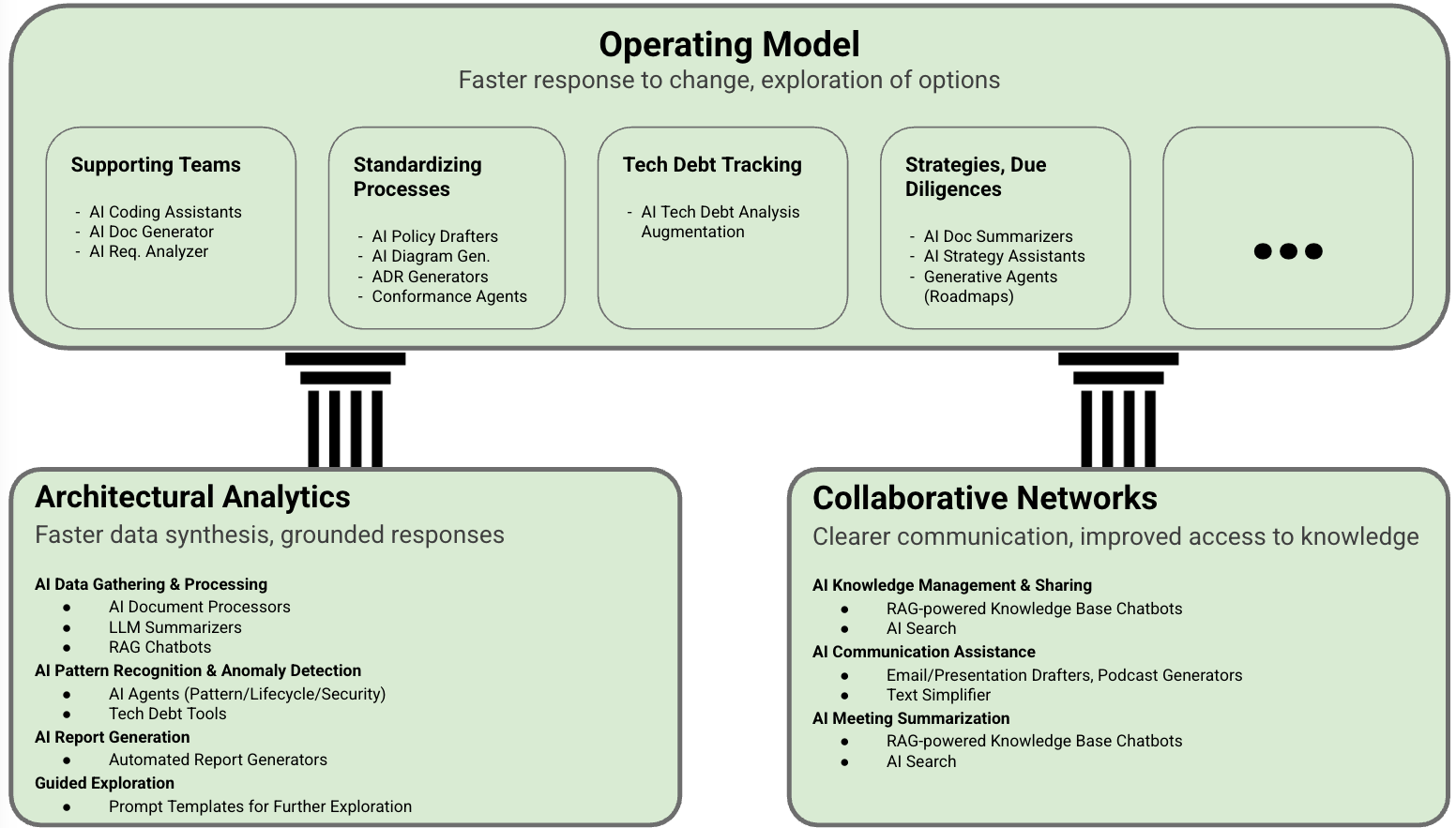 Figure 1: An overview of potential Generative AI in the context of the Grounded Architecture Framework.
Figure 1: An overview of potential Generative AI in the context of the Grounded Architecture Framework.
Incorporating GenAI capabilities into various aspects of Grounded Architecture could create significant value:
- GenAI in Lightweight Architectural Analytics (Understanding the Current State)
- Gathering and Processing Data: Automation could simplify the collection and summarization of information from diverse sources like code repositories, cloud service bills, customer support tickets, and documentation. Tools like RAG might help in consolidating this scattered information.
- Recognizing Patterns and Anomalies: There’s potential for improved detection of architectural patterns, common pitfalls, security vulnerabilities, and technical debt through advanced GenAI analysis.
- Generating Reports and Dashboards: Automatically creating architectural reports and visual dashboards could make information more accessible and consistent.
- GenAI in Collaborative Networks (Working Together)
- Managing and Sharing Knowledge: Transforming static information stores, such as documents and Architecture Decision Records (ADRs), into dynamic, searchable knowledge bases might enhance accessibility and usability through conversational interfaces.
- Assisting with Communication: GenAI could assist in drafting clear communications for various audiences, from technical colleagues to business executives.
- Summarizing Meetings: Automatically generating summaries of meetings could capture key decisions and action items effectively.
- GenAI in the Operating Model (How Architecture Gets Done)
- Supporting Coding and Documentation: AI-powered assistance for writing code and creating documentation may prove beneficial.
- Generating Architectural Artifacts: There could be value in automating or assisting with the creation of various architectural documents and reports.
- Tracking Technical Debt: Improvements in analyzing technical debt, summarizing findings, and prioritizing fixes could impact business outcomes positively.
- Speeding Up Due Diligence: GenAI might help accelerate the review process of technical documents during mergers and acquisitions by assisting with summarization.
- Standardizing Processes: Drafting standards, policies, and governance procedures with AI’s help could lead to greater consistency.
- Developing Strategy: AI could assist in generating initial drafts of strategy documents based on current analytics and future options.
I see GenAI as a way to streamline architecture work by automating analysis, facilitating communication, and enhancing strategy and decision-making across the Lightweight Architectural Analytics, Collaborative Networks, and Operating Model pillars.
Practical Examples: GenAI in Action
I see GenAI as a very helpful tool for architects. By handling repetitive tasks, it allows them to focus more on important aspects of their work, like evaluating various options, collaborating with others, interpreting outcomes, and applying their own judgment. These are crucial parts of the Grounded Architecture approach, and GenAI could make their workflow more efficient.
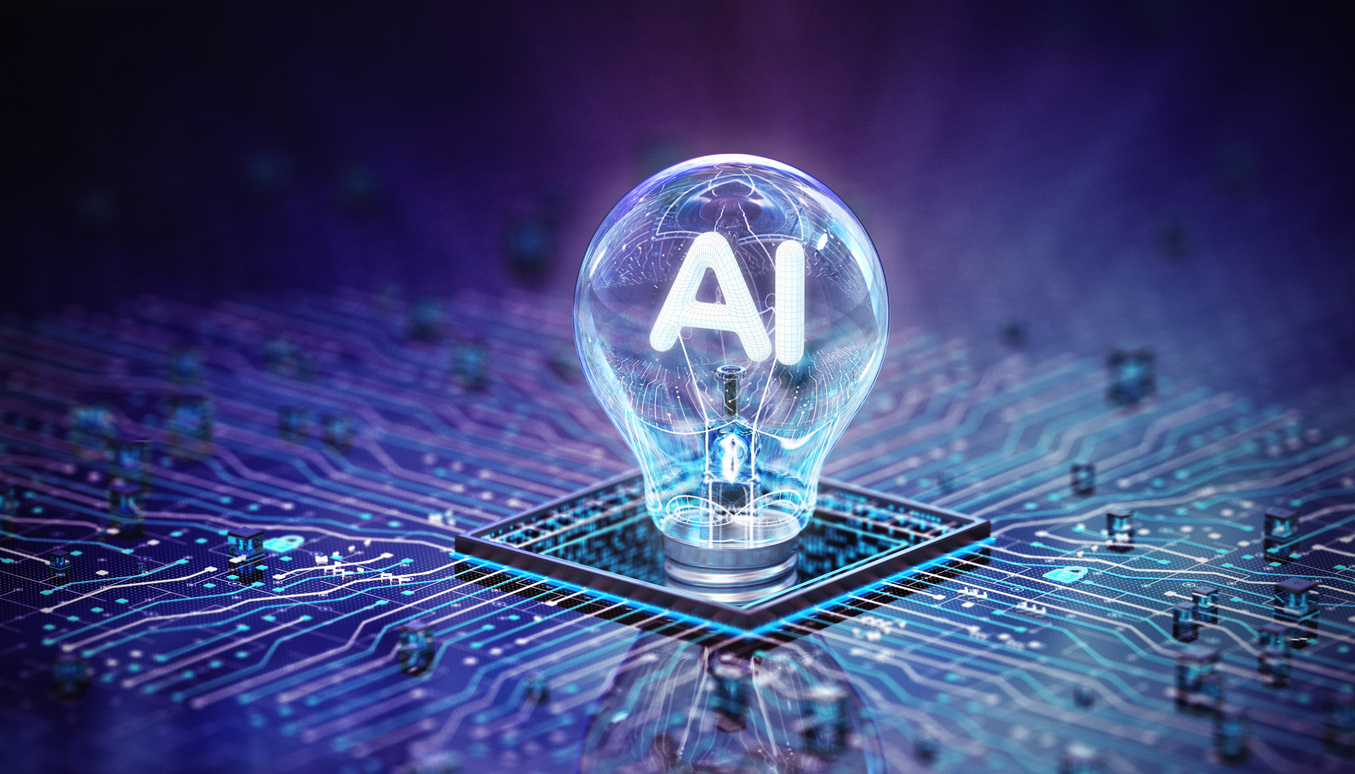
Use Case 1: Analyzing Dependencies and Technical Debt
- Scenario: It can be necessary to evaluate the interdependencies between various microservices and identify any technical debt, such as unnecessary connections or outdated software libraries.
- GenAI Application: By automatically parsing and summarizing information from code repositories, CI/CD pipelines, and APM tools, GenAI can provide insights. Additionally, using RAG to explore internal documentation can help clarify ownership and relevant standards. This can pave the way for AI tools to detect patterns indicating problems or aging technologies and even aid in drafting a report on these findings.
- Grounded Architecture Link: This directly enhances Lightweight Architectural Analytics.
Use Case 2: Generating Architecture Decision Records (ADRs)
- Scenario: After a team discussion, documenting the choice of messaging queue technology is often needed.
- GenAI Application: GenAI can summarize the discussion notes. By providing this summary along with an ADR template, it can utilize RAG to pull in relevant context, aiding in drafting key ADR sections such as the problem, decision made, reasoning, and expected outcomes for the architect to review and finalize.
- Grounded Architecture Link: This contributes to the Operating Model by enhancing documentation standards and supports Collaborative Networks by capturing important knowledge.
Use Case 3: Creating Architecture Diagrams from Descriptions
- Scenario: Quickly generating a system overview diagram for a discussion might be necessary.
- GenAI Application: Using AI-powered diagramming tools, one can describe the system and its components in plain language, and the tool will create an initial diagram that can be refined later. Some tools allow the creation of diagrams from code or sketches as well.
- Grounded Architecture Link: This streamlines the development of visuals for Collaborative Networks and supports design efforts in the Operating Model.
Use Case 4: Improving Requirements Analysis
- Scenario: When faced with various inputs like user stories, emails, and transcripts, organizing them into a cohesive list of requirements can be a challenge.
- GenAI Application: NLP tools can analyze these inputs to extract, summarize, and structure key requirements, identify ambiguities, and even help draft initial acceptance criteria and test scenarios, making the process smoother.
- Grounded Architecture Link: This ultimately supports the early design phase within the Operating Model, ensuring that solutions align with stated requirements.
Use Case 5: Assisting with Solution Design and Evaluation
- Scenario: Exploring architectural strategies for a new recommendation engine based on quality goals like performance or security can be worthwhile.
- GenAI Application: By leveraging GenAI alongside RAG for access to internal standards and data, one could get suggestions for relevant design patterns, generate preliminary descriptions, and even evaluate various options based on technical documentation and performance benchmarks, with some tools simulating design performance.
- Grounded Architecture Link: This fosters design and strategy work within the Operating Model, using data and established patterns to inform decisions.
Use Case 6: Enhancing Code Review Processes
- Scenario: Code reviews to ensure compliance with company standards, identifying potential bugs, and managing technical debt are essential tasks.
- GenAI Application: Integrating AI-powered code review tools into the CI/CD pipeline could help in scanning code changes for style violations, errors, and security vulnerabilities while generating review summaries and suggesting fixes.
- Grounded Architecture Link: This supports the Operating Model by enhancing code quality, maintaining standards, and mitigating technical debt.
Balancing Benefits, Risks, and Challenges
I believe that GenAI can significantly enhance IT practice. These benefits resonate with the principles of Grounded Architecture: efficiency aligns with pragmatism, faster data analysis supports data-informed decisions, better knowledge sharing promotes collaborative networks, and improved option evaluation encourages adaptability:
- Increased Efficiency and Productivity: I have found that using GenAI allows me to automate and speed up tasks like drafting documents (including Standard Operating Procedures and Architecture Decision Records), creating diagrams, analyzing data, and reviewing code. This saves me valuable time, enabling me to focus more on strategic work.
- Improved Consistency and Quality: With GenAI, I can ensure that all architectural documents and diagrams adhere uniformly to established standards and best practices. Consistent code reviews help reduce variations and minimize human error.
- Faster Data-Driven Decision Support: GenAI helps me process, combine, and summarize diverse datasets quickly for Lightweight Architectural Analytics. This leads to faster insights and aids in uncovering subtle patterns, aligning perfectly with the core principles of Grounded Architecture.
- Enhanced Collaboration and Knowledge Sharing: I appreciate how GenAI makes it easier to access collective knowledge within Collaborative Networks, especially through RAG-powered chatbots and search tools. Clearer communication, bolstered by AI summarization and tailored content for specific audiences, accelerates onboarding for new team members.
- Fostering Innovation: By freeing up my time, GenAI creates more opportunities for innovation. I can explore different design options and generate new ideas based on data patterns.
- Making Architectural Insights More Accessible: GenAI allows me to present architectural information to non-technical stakeholders through conversational interfaces and visualizations, which aligns with Grounded Architecture’s goal of embedding architectural thinking throughout the organization.
However, I also recognize that these benefits come with risks. For instance, gaining speed might sacrifice accuracy, or analyzing data could raise privacy concerns. To fully realize these benefits, it is important to actively managing these risks, with a focus on good governance, ethical considerations, and human oversight:
- Accuracy and Reliability (AI “Hallucinations”): GenAI can sometimes produce incorrect, nonsensical, biased, or completely fabricated information. Careful human review and validation are essential, and this can sometimes use up the time saved through automation.
- Security and Data Privacy: I take seriously the risks associated with feeding confidential company data into GenAI models, particularly those hosted on public cloud services. Risks of data leaks, unauthorized access, or misuse of data for training other models necessitate strict access controls and data encryption.
- Ethical Issues and Bias: AI models can reflect and amplify biases present in their training data, leading to unfair or problematic outcomes. It’s important for me to proactively detect and reduce these biases.
- Intellectual Property (IP) and Copyright: The legal landscape around ownership of AI-generated content is evolving, raising potential risks regarding copyright infringement if the AI was trained on protected material. There’s often a lack of clear guarantees regarding IP protection.
- Need for Human Oversight and Judgment: I believe that GenAI should assist architects like me, not replace our critical thinking, understanding of context, and strategic judgment. Over-relying on GenAI can lead to poor decisions, highlighting the need for human expertise.
- Cost and Resource Requirements: I’ve realized that implementing GenAI can be expensive, requiring significant computing power and specialized expertise. The ongoing costs of using GenAI can also add up.
- Speed and Performance (Latency): In applications that require real-time responses, I have noticed that GenAI might be too slow due to the complex calculations involved in generating content or analyses, which could affect user experience.
- Complexity of Integration: I find that fitting GenAI into existing enterprise architecture tools and workflows is complex. This involves managing APIs, data pipelines, designing effective prompts, setting up RAG context, and coordinating different components.
- Model Limitations and Context Window: GenAI models have limitations on how much information they can consider at once, which can affect their effectiveness in certain scenarios.
Responsibly Adopting GenAI
As organizations increasingly incorporate generative AI (GenAI) into their operations, it becomes essential to approach this transformative technology with careful consideration and strategic planning. The implementation of GenAI offers numerous opportunities for innovation and efficiency, yet it also brings forth challenges that must be navigated thoughtfully. To harness the full potential of GenAI while mitigating risks, organizations can benefit from a structured framework that prioritizes clear goals, robust governance, and a culture of responsible use.
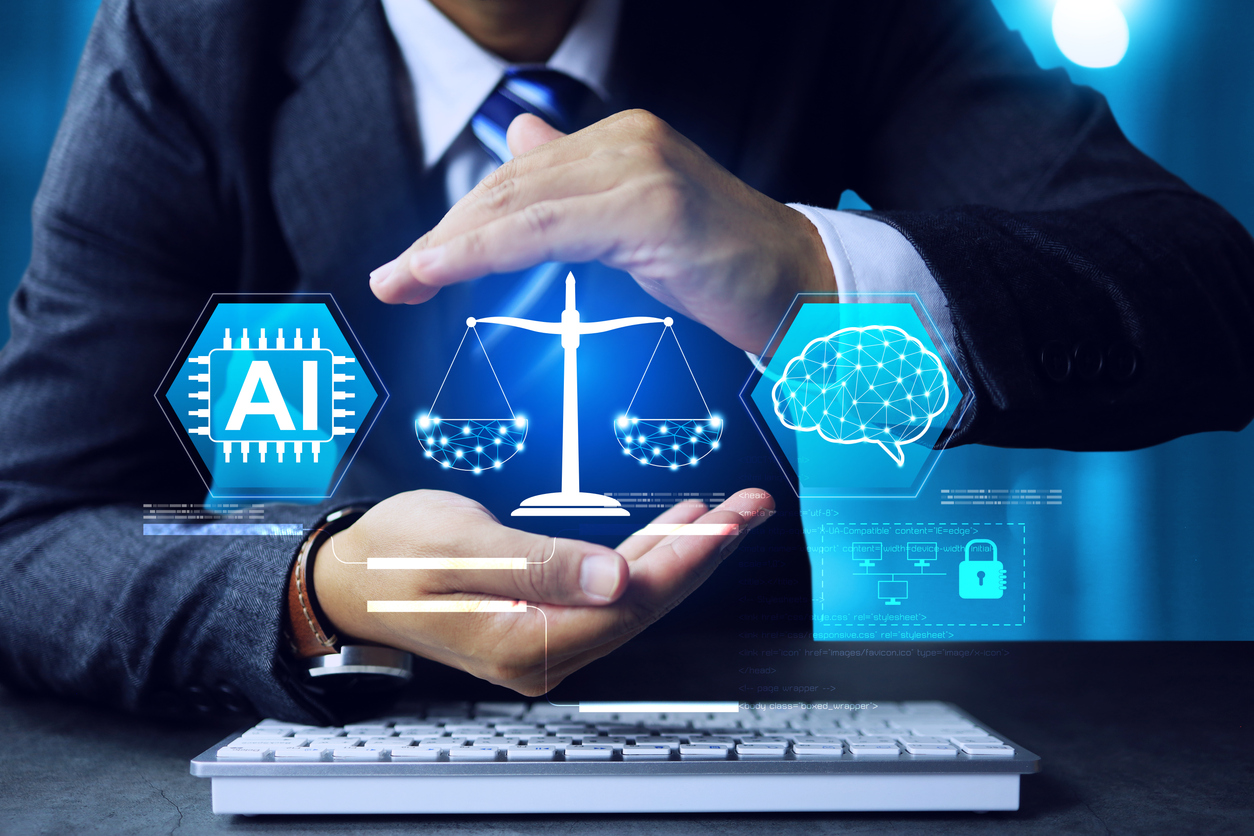
Below are some effective practices I found useful to guide the successful integration of GenAI in a way that aligns with organizational objectives and ethical standards:
- Start with Clear Goals & Prioritized Uses: Define specific, measurable objectives. Focus on uses that align with your strategy and Grounded Architecture principles. Begin with lower-risk experiments.
- Establish Strong Data Governance: Ensure your data is high-quality, secure, private, and consistently managed, especially for grounding AI/RAG systems. Implement robust policies for data quality, privacy, security, access control (using user identity), encryption, and data retention. Keep track of data origins (lineage).
- Implement Human-in-the-Loop (HITL) & Oversight: Design workflows that include points for human review and validation. Architects should always have the final say. Clearly define who is accountable. Guard against simply trusting AI outputs without scrutiny (automation bias).
- Adopt a Principle-Based Governance Framework: Use core ethical principles such as Fairness, Reliability, Safety, Privacy & Security, Inclusiveness, Transparency, and Accountability. Form an AI review board or a Center of Excellence (CoE). Document all decisions.
- Focus on Grounding and Context (RAG): For business use, prioritize RAG to ensure outputs are relevant and to minimize AI “hallucinations.” Connect GenAI to curated, reliable internal knowledge sources. Prepare your data so it can be easily retrieved by RAG systems.
- Choose the Right Tools and Models (Build vs. Buy): Make deliberate decisions about your implementation strategy. Evaluate different options: using AI features embedded in existing tools, using public GenAI model APIs, or building custom models. Consider techniques like fine-tuning, prompt engineering, AI agents, and RAG to customize models.
- Architect for Security and Modularity: Incorporate “Security by Design.” Limit system permissions and use individual user context for authorizing access. Build modular AI systems that are flexible and easier to manage for risk.
- Test, Monitor, and Iterate: Treat GenAI systems like products that need ongoing improvement. Conduct thorough pilot programs. Implement continuous monitoring for performance, accuracy, changes in behavior (drift), bias, and cost (this is sometimes called AI FinOps). Create feedback loops for continuous improvement.
- Promote AI Literacy and a Culture of Responsible Use: Train users on GenAI’s capabilities, limitations, risks, and ethical considerations. Encourage critical evaluation of AI outputs and open discussion about any concerns. Clearly communicate AI usage policies.
In conclusion, organizations grounded in data-driven practices, collaboration, and pragmatic operations are well-positioned to adopt GenAI responsibly—but success depends on setting clear goals, ensuring strong governance, maintaining human oversight, and fostering a culture of continuous learning, ethical use, and thoughtful system design.
The Evolving Landscape
Emerging AI trends suggest even faster feedback loops within the Grounded Architecture framework:
- Architectural Analytics could become nearly instantaneous through AI monitoring.
- Insights could be synthesized and shared rapidly within Collaborative Networks.
- The Operating Model could be more dynamic and adaptive thanks to AI-driven analysis and recommendations.

These trends enhance the agility, responsiveness, and strategic value of Enterprise Architecture when guided by Grounded Architecture principles:
- Towards Real-Time, Augmented Enterprise Architecture: A shift from periodic documentation to a dynamic, “living” EA. AI agents could continuously monitor digital signals, updating architectural models and knowledge graphs automatically. Architects would become “augmented architects,” using AI as a “cognitive assistant” or “copilot” for real-time navigation and decision-making. The Lightweight Architecture Analytics repository could evolve into an “operating system for change.”
- Rise of Agentic AI: AI systems with greater autonomy that can perform complex, multi-step tasks—like reasoning, planning, using tools, and learning—with minimal human input. Potential uses in EA include continuous governance checks, proactively detecting and fixing architectural drift, simulating the impact of changes, and optimizing workflows. This also brings the possibility of “self-optimizing organizations,” but introduces new risks regarding control and security.
- Digital Twins of Organizations (DTOs): Dynamic, data-rich digital replicas of a company’s operations, processes, and systems. These DTOs would be fueled by real-time data and use AI/GenAI for simulation, prediction, and “what-if” analysis. This aligns perfectly with Grounded Architecture’s goal of having a complete and current understanding of the enterprise. Companies like BMW and UPS are already exploring this.
- Increased Democratization and Collaboration: Intuitive AI tools, such as those using natural language interfaces (like chatbots) and automatic data visualizations, can make architectural insights accessible to a wider range of stakeholders. Chatbots that can query EA repositories or AI-generated reports can strengthen Grounded Architecture’s Collaborative Networks.
- Composable and Modular AI Architectures: Due to rapid innovation, there will likely be an emphasis on flexible AI system designs that allow easy integration and swapping of components (like different LLMs, vector databases, RAG modules, or AI agents). This fits well with Grounded Architecture’s principle of Adaptability.
- Evolving Role of the Architect: The architect’s role may shift more towards higher-level functions: governing AI use, designing ethical safeguards, curating data and AI models, ensuring business alignment, facilitating collaboration, and critically evaluating AI outputs. New roles like “Enterprise AI Architect” may emerge.
- Vertical AI Specialization: The trend of AI solutions tailored for specific industries (like healthcare or finance) will likely continue. This will require architects to understand domain-specific AI applications.
Questions to Consider
- How can you specifically use GenAI to improve the analytics within your organization? Which data sources are most promising for providing context with RAG?
- In what ways could GenAI tools enhance knowledge sharing and communication among your teams and stakeholders? What might be the obstacles to adopting these tools?
- Which activities in your team’s current way of working (Operating Model)—like creating ADRs, tracking technical debt, or defining standards—could benefit most from GenAI assistance?
- Given the risks of AI making errors (“hallucinations”) or showing bias, what specific human review processes would you need for critical architectural outputs generated by AI?
- What are the biggest data privacy and security concerns for using GenAI with your company’s data, and how can you design solutions to effectively reduce these risks?
- How can you encourage a culture of responsible AI use and critical thinking about AI outputs among your fellow architects and development teams?
- Which specific GenAI use case (e.g., generating diagrams, analyzing requirements, reviewing code) should you try experimenting with first, and how would you measure its success?
- How does the Grounded Architecture principle of “Data-Driven Decisions” connect with the need for high-quality data to effectively train and ground GenAI models in your organization?
- Looking at future trends like Agentic AI and Digital Twins of Organizations (DTOs), how should you start preparing your skills and your organization’s architecture practice for these advancements?
- What ethical guidelines and governance principles are most important for your organization to establish before widely adopting GenAI within your architecture practice?
Tables
Grounded Architecture Element vs. GenAI Capability
| Grounded Architecture Element | GenAI Capability | Description |
|---|---|---|
| Lightweight Architectural Analytics | Data Gathering & Processing | Automates collecting, understanding, and summarizing information from diverse sources like code, cloud costs, support tickets, and documents. |
| Pattern Recognition & Anomaly Detection | More quickly identifies architectural issues, technical debt, security risks, and old technologies using AI analysis. | |
| Report and Dashboard Generation | Automatically creates reports and dashboards from analyzed data to speed up decision-making. | |
| Collaborative Networks | Knowledge Management & Sharing | Turns static knowledge (like documents and ADRs) into dynamic, searchable resources using RAG. |
| Communication Assistance | Helps draft communications tailored for different audiences, both technical and non-technical. | |
| Meeting Summarization | Summarizes discussions, decisions, and action items from meeting recordings or notes. | |
| Operating Model | Coding and Documentation Support | Offers AI help for writing code, technical documents, and analyzing requirements. |
| Artifact Generation | Helps create architecture diagrams, ADRs, compliance documents, and reports. | |
| Technical Debt Tracking | Summarizes technical debt issues, flags aging technologies, and helps prioritize fixes based on their impact. | |
| Due Diligence Acceleration | Speeds up the review of technical documents for mergers, acquisitions, or technology choices. | |
| Process Standardization | Helps draft standards and governance processes, and can check if proposals meet these standards. | |
| Strategy Development | Summarizes current situations and suggests future strategies for areas like cloud, data, and technology platforms. |
GenAI Best Practices Checklist
| Best Practice Area | Key Action/Consideration | Relevance to Grounded Architecture |
|---|---|---|
| Data Governance | Ensure high-quality, secure, private, managed data. Implement access controls. | Fundamental for reliable Lightweight Analytics & RAG. Supports Data-Driven principle. |
| Human Oversight | Use Human-in-the-Loop for validation. Architects review AI output. Avoid automation bias. | Reinforces the architect’s role in Networks & Operating Model. Upholds Pragmatism. |
| Model Management | Choose suitable models. Prioritize RAG. Monitor performance, cost. Iterate. | Ensures AI tools effectively support the Operating Model & Analytics. Supports Adaptability. |
| Security | Design secure applications (e.g., using user identity). Encrypt data. Conduct security reviews. | Protects sensitive data used in Analytics and shared in Collaborative Networks. |
| Ethics & Fairness | Assess and reduce bias. Ensure transparency and explainability of AI actions. | Ensures fairness in Analytics insights & Operating Model decisions. Builds trust in Collaboration. |
| Governance & Process | Define use cases and objectives. Implement principle-based governance. Document everything. | Structures GenAI within the Operating Model. Aligns AI to goals. Supports Continuous Realignment. |
| Culture & Literacy | Train users on responsible AI. Foster critical thinking and collaboration. | Enhances how effectively Collaborative Networks use AI. Builds trust. |
To Probe Further: References
Generative AI - General Concepts, Trends & Enterprise Impact
- Generative AI: What Is It, Tools, Models, Applications and Use Cases - Gartner
- Generative AI Trends For All Facets of Business - Forrester
- Generative AI use cases for the enterprise - IBM Think Blog
- 2024: The State of Generative AI in the Enterprise - Menlo Ventures
- Beyond ChatGPT: The Future of Generative AI for Enterprises - Gartner
- GenAI and its impact on the IT infrastructure - HCLTech Blogs
- Real-world gen AI use cases from the world’s leading organizations - Google Cloud Blog
- The Complete Guide to Generative AI Architecture - XenonStack Blog
Retrieval-Augmented Generation (RAG)
- What are RAG models? A guide to enterprise AI in 2025 - Glean Blog
- 8 Retrieval Augmented Generation (RAG) Architectures You Should Know in 2025 - Humanloop Blog
- What Is RAG Architecture? A New Approach to LLMs - Cohere Blog
- What is Retrieval-Augmented Generation (RAG)? A Practical Guide - K2view
- RAG Is All The Rage — And The Machine Is Getting More Complex - Forrester Blogs
- AI and knowledge management: Why RAG is essential - Outshift - Cisco Blog
- Data Governance for Retrieval-Augmented Generation (RAG) - Enterprise Knowledge
- Enterprise RAG: Bridging Knowledge Gaps with AI-Powered Retrieval - Deepchecks
- Why RAG is a game changer for enterprise knowledge management - HTEC Insights Blog
Agentic AI
- What is Agentic AI? A Practical Guide - K2view
- What Is Agentic Architecture? - IBM Think Blog
- What Is Agentic AI? - NVIDIA Blog
- What is Agentic AI? Definition, Examples and Trends in 2025 - Aisera Blog
- Tech Navigator: Agentic AI Architecture and Blueprints - Infosys IKI Research
- Agentic AI in enterprise workflow automation - IBM Developer
- Agentic AI: The Future of Business Process Automation - ML Conference Blog
- From automation to autonomy: Reshaping enterprise architecture with agentic AI and business capability models - Neudesic Blog
- Designing Agentic AI Systems, Part 1: Agent Architectures - Vectorize Blog
- Agentic AI Architecture: A Deep Dive - Markovate Blog
Responsible AI, Governance, Best Practices & Security
- 6 Best Practices for Implementing Generative AI - Iguazio Blog
- 5 Generative AI Best Practices For Enterprise Businesses - Coveo Blog
- Responsible AI in a Dynamic Regulatory Environment - Cloud Security Alliance (CSA)
- Responsible AI in Azure Workloads - Microsoft Azure Well-Architected Framework
- Responsible AI Principles - FS-ISAC
- Responsible AI Architect’s Guide - IndiaAI
- Best practices to architect secure generative AI applications - Microsoft Community Hub
- Building AI Responsibly - AWS
- What is Responsible AI - Azure Machine Learning - Microsoft Learn
- Responsible AI by design: Building a framework of trust - The Enterprisers Project
- EU AI Act: A Complete Guide for Enterprise Architects - Ardoq Knowledge Hub
- 10 Best Practices for Scaling Generative AI - SnapLogic Community
- Responsible AI Guidelines - Defense Innovation Unit (DIU)
GenAI & Enterprise Architecture / Solution Architecture
- Real-Time Enterprise Architecture In The Age Of AI - Forrester Blogs
- AI And GenAI Are Game-Changers For Enterprise Architecture Leaders - Forrester Blogs
- The Future of Enterprise Architecture in an AI-Driven World - Techstrong.ai
- GenAI with IT Architecture: Building intelligent foundations together - Cognizant Insights Blog
- Architects: Jump In To Generative AI - Forrester Blogs
- What is AI in solutions architecture? - Arphie Glossary
- Generative AI and EA: Modeling the Enterprise - Ardoq Blog
- The Role of AI in Enterprise Architecture: A Future Outlook - ValueBlue Blog
- A Pragmatic Perspective on GenAI in Solution Architecture - EPAM Insights Blog
- The future of enterprise architecture and AI integration - Bizzdesign Blog
- Digital Experience - Gen AI powered Enterprise Architecture - Infosys Blogs
- AI Architecture Design - Azure - Microsoft Learn
- Enterprise Architecture and Digital Transformation Trends for 2025 - Orbus Software Blog
- How Generative AI is Revolutionizing Enterprise Architecture – Must-Read Insights! - Reddit (r/EnterpriseArchitect)
- Has anyone used AI Tools for Solution Design and Architecture (I will not promote) - Reddit (r/startups)
- 9 AI Architecture Design Challenges & Solutions - RTS Labs
- Unlocking Effectiveness: How Generative AI is Revolutionizing Enterprise Architecture - Protiviti TC Blog
- Generative AI and Enterprise Architecture: Roadmapping the Future - Ardoq Blog
- Game-changing Enterprise Architecture Generative AI features you can’t miss! - Bizzdesign Blog
- The Future of Generative AI: Empowering Enterprise Architects - Vultr Blogs
- Navigating AI Implementation: The Case for an Enterprise AI Architect - BCG Platinion Insights
GenAI Use Cases & Tools (Specific Areas)
Cloud Operations:
Code Review & Development:
- Generative AI Use Cases and Resources - AWS
- AI Code Review: An Engineering Leader’s Survival Guide - LinearB Blog
- AI Code Reviews - GitHub Resources
- AI-Driven Code Review: Enhancing Developer Productivity and Code Quality - CACM Blog
- AI Code Reviews - CodeRabbit
- AI Code Review - IBM Think Insights
- Code Reviews with AI a developer guide - foojay.io
Documentation & Diagramming:
- AI Architecture Diagram Generator - Eraser.io
- SWAPP integrates advanced AI with human expertise to automate documentation and modeling tasks - Swapp
- Klarity Architect - Transform Your Documentation and Processes - Klarity.ai
- 20 AI Tools for Architects - Part3 Blog
- Now Assist for Enterprise Architecture (EA) - ServiceNow Store
- Generative AI for Architecture Firms - Invoke
- AI Tool that can generate Architecture Diagrams? : r/AWSCertifications - Reddit (r/AWSCertifications)
- Generative AI on Architecture Diagram Creation : Part-2 - RandomTrees Blog
- AI tools you use as an architect? : r/softwarearchitecture - Reddit (r/softwarearchitecture)
- AI Documentation Generator - Bito AI Blog
- 15 Top AI Tools for Architects and Designers - Architizer Journal
- Top 16 AI Tools for Architects in 2025 - Enscape Blog
Requirements Analysis:
- “Revolutionizing Systems Engineering: The Role of AI in Requirements Analysis” - DEV Community
- 4 Ways AI Is Transforming Requirements Management - Altium 365 Resources
- Using AI for requirements analysis: A case study - Thoughtworks Insights Blog
Technical Debt Management:
- 9 Tools to Measure Technical Debt in 2025 - CodeAnt AI Blog
- Top 10 Tools to Manage and Track Technical Debt in 2025 - ClickUp Blog
- Artificial Intelligence for Technical Debt Management in Software Development - arXiv
- Tackling Technical Debt with Generative AI - Encora Insights
- Managing Technical Debt with AI-Powered Productivity Tools: A Complete Guide - Qodo Blog
- Reducing Technical Debt with AI - Concord USA Blog
Grounded Architecture Framework ← Transforming Organizations with Grounded Architecture |
On Being Architect On Being Architect: Introduction → |